
|
This tab is organized by holding institution. It contains
information regarding the institutions that hold the
manuscripts used in this study. These include columns for a
unique “holding institution identifier” (hi_id), the name of
the institution, city, country, and columns for latitude and
longitude.
-
Linking data with other tabs: The holding institution
identifier serves as the link by which data from other tabs
can be connected with data about the holding institutions
and their locations.
-
Labels, data, and rollovers: The data columns with
institutional names, city, country are ideal for lables,
data content, and rollovers in visualizations.
-
Latitude and longitude: These columns enable
visualizations laid out on maps
|
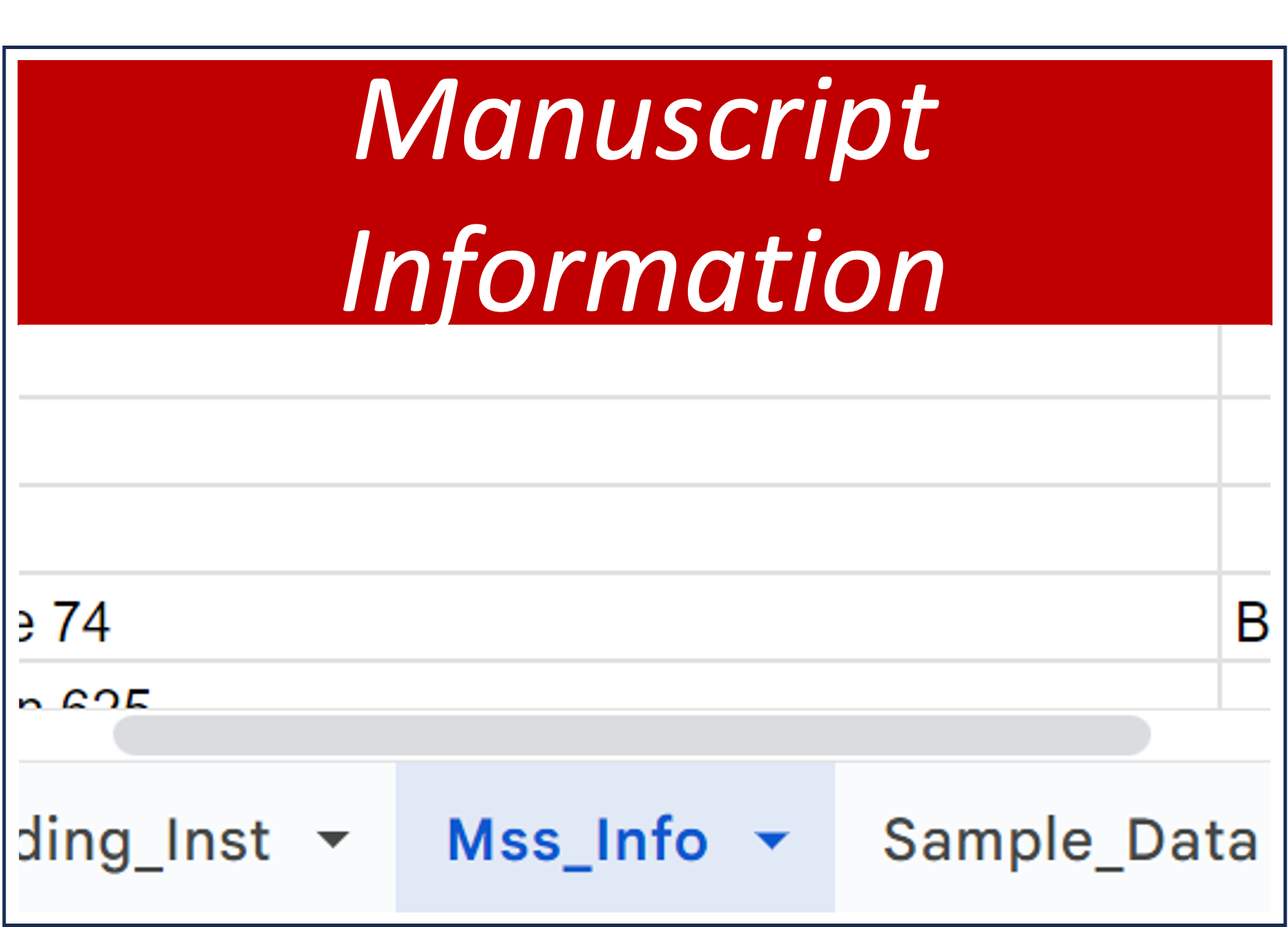
|
This tab is organized by manuscript. It contains information
regarding the manuscripts used in the study. These include
columns for a unique “manuscript identifier” (ms_id), primary
and secondary sigla for the manuscripts, the holding
institution identifier, and various columns relating to a
description of the the dating of the manuscript.
-
Linking data with other tabs: The manuscript
identifier serves as the link by which data from other tabs
can be connected with data about the manuscripts.
-
The column that lists the holding institution id provides a
direct path to the holding institution information.
-
Labels, data, and rollovers: The data columns with
manuscript sigla, and information about dating are ideal for
organizing the data in chronological visualizations, as well
as for rollovers and labels.
|

|
This tab is organized by book of the Ethiopic Old Testament
(book_id). Each of the following columns contains information
about the sample of manuscripts used in the THEOT study and
about the extent of the text transcribed for the study. These
include columns identifying the book under study, the number
of manuscripts, a list of the specific manuscripts used,
number of words in the base text of the sample, the total
words in the book, the total number of words in the sample,
the calculated percentage of the book in the sample of the
study, the number of data rows, the total number of data
points represented by the number of manuscripts multiplied by
the number of words in dots and bars grid.
-
Linking data with other tabs: By linking to this
tab’s book_id one can either pull out data on a specific
book from other spread sheets, or distinguish data in a tab
that contains comingled data about multiple books.
-
The column that lists the holding institution id provides a
direct path to the holding institution information.
-
Labels, data, and rollovers: The data columns
regarding numbers and lists of manuscripts, sample passages,
percent of the book transcribed, and information about data
points are ideal for lables, data content, and rollovers in
visualizations.
|
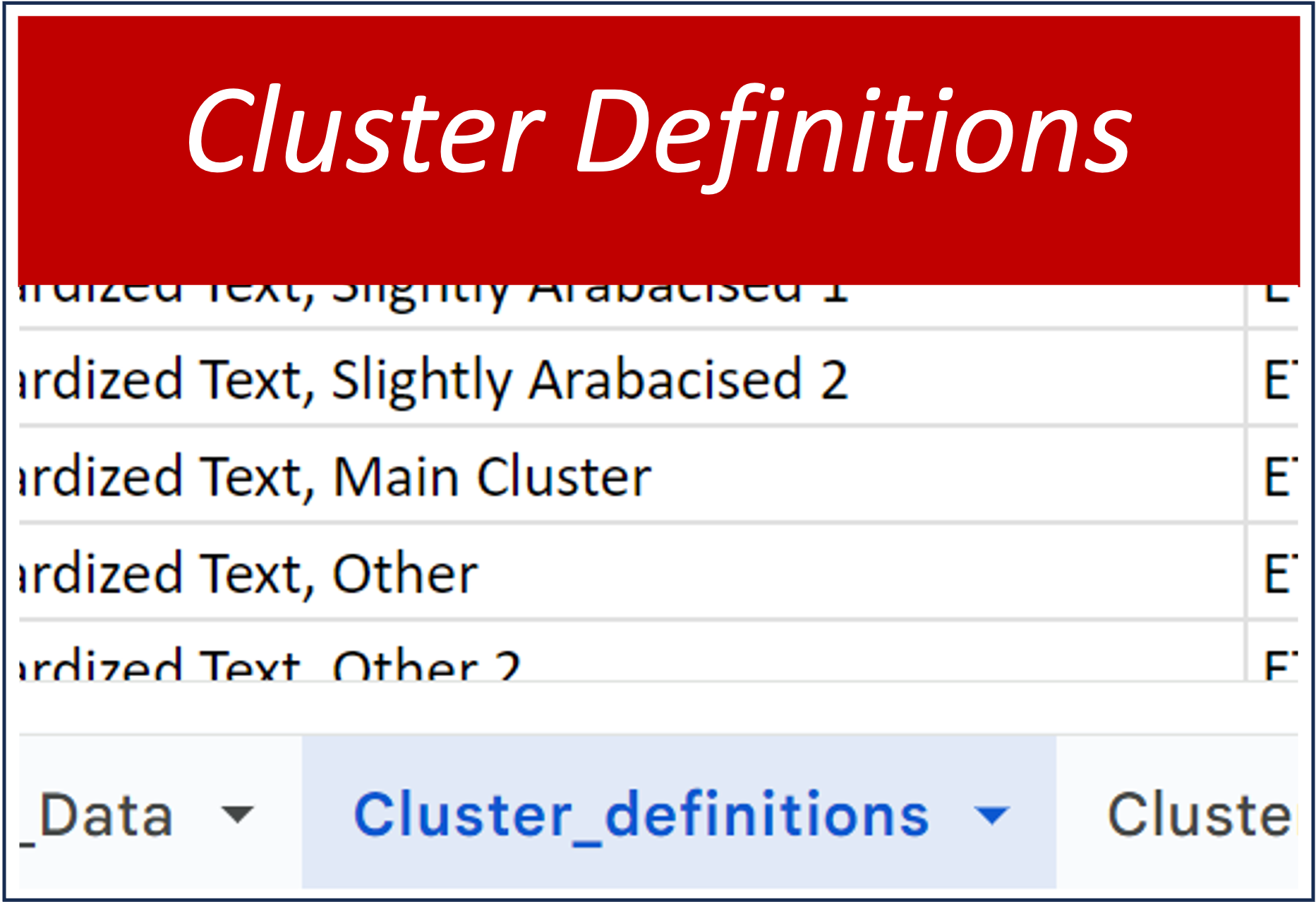
|
This tab is a definition table that sets forth a naming
convention for cluster identification (clus-id) and various
ways of describing the clusters. These are used to designate
the cluster membership in a specific old testament book for
the various manuscripts in our study. In the next tab, the
specific manuscripts will be labeled with the cluster
definition appropriate to the book being studied.
|
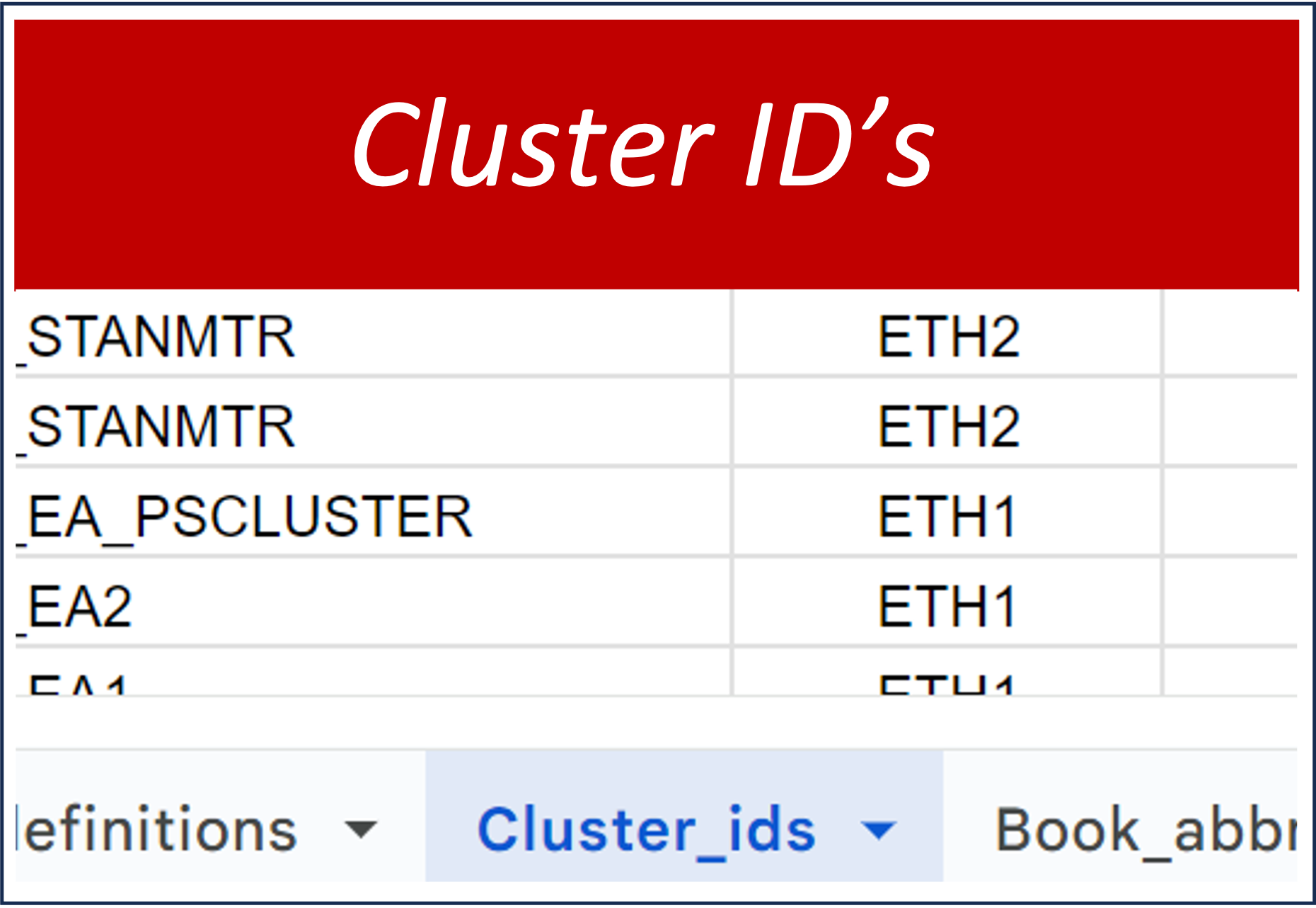
|
This tab is organized to provide information about the
clusters to which the various manuscripts belong in each book
study. The primary columns provide book_id, ms_id, and
clus_id. Secondary columns indicate witness number
(witness_no) and cluster number (cluster_no), which are book
specific, i.e., not uniform from book to book.
-
Linking data with other tabs: The ms_id column
facilitates linking with the manuscript information tab and
all of its columns of data. The book_id column facilitates
linking this datasheet to the book abbreviations tab, which
enables the selection of book specific information out of
other tabs.
-
Labels, data, and rollovers: The clus_id column
provides the fundamental information about cluster
membership. The text_epoch column provides a basic
distinction between the periods known as EthI (14-16th
centuries) and EthII (17th-20th centuries). These are ideal
for labels, data content, and rollovers in visualizations.
|
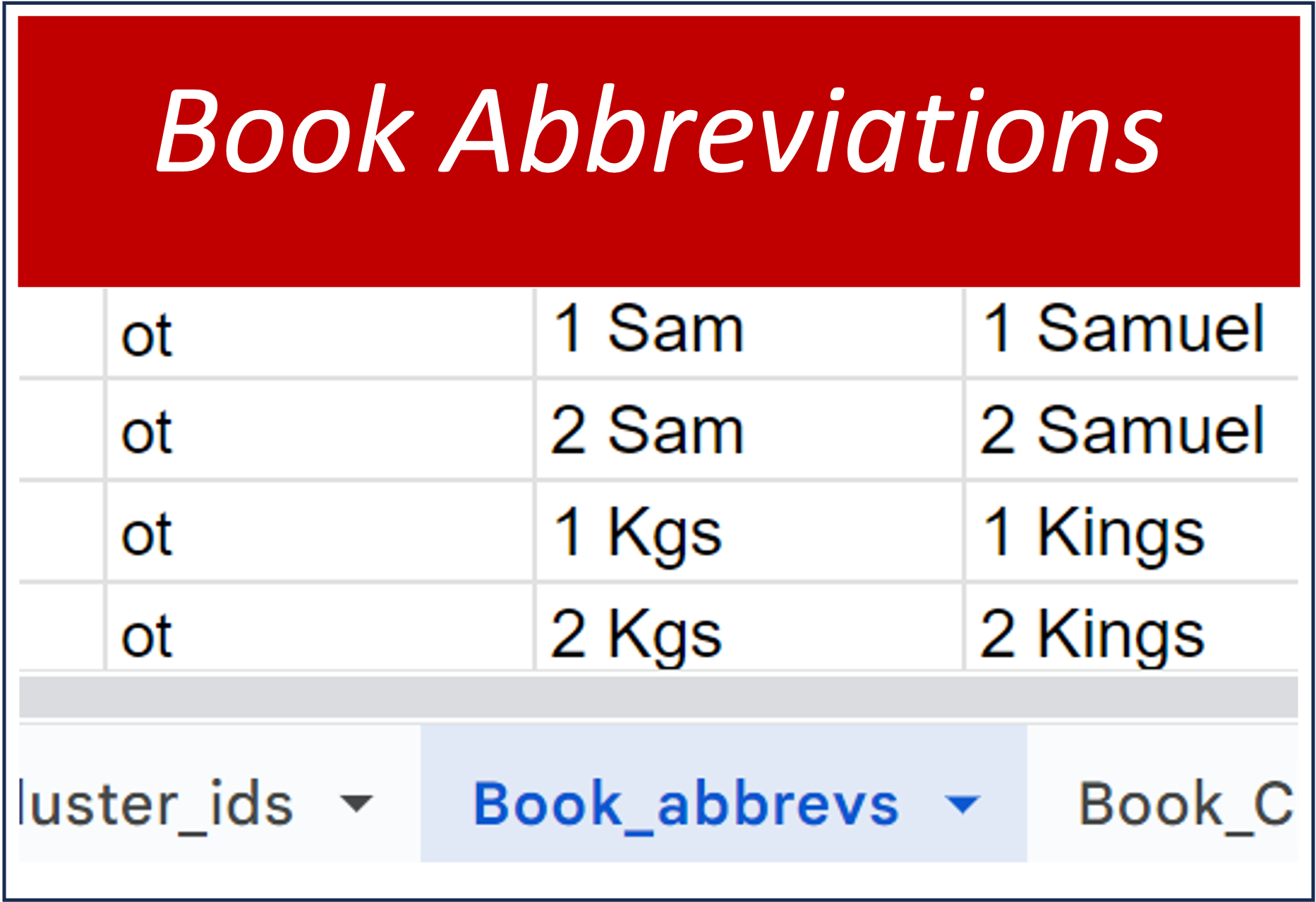
|
This tab is also a definition table. It provides the standard
SBL abbreviations for the books of the bible, which we have
adopted for our work and data. These are clarified further
with columns indicating membership in the conventional
canonical categories of Old Testament New, Testament or
Apocrypha.
-
Linking data with other tabs: As a definition table,
these columns provide the means to differentiate or
aggregate any of the book_id columns in any of the other
data tabs.
|

|
This tab is another definition table which simply provides a
fast and easy approach to grouping data under these headings .
|
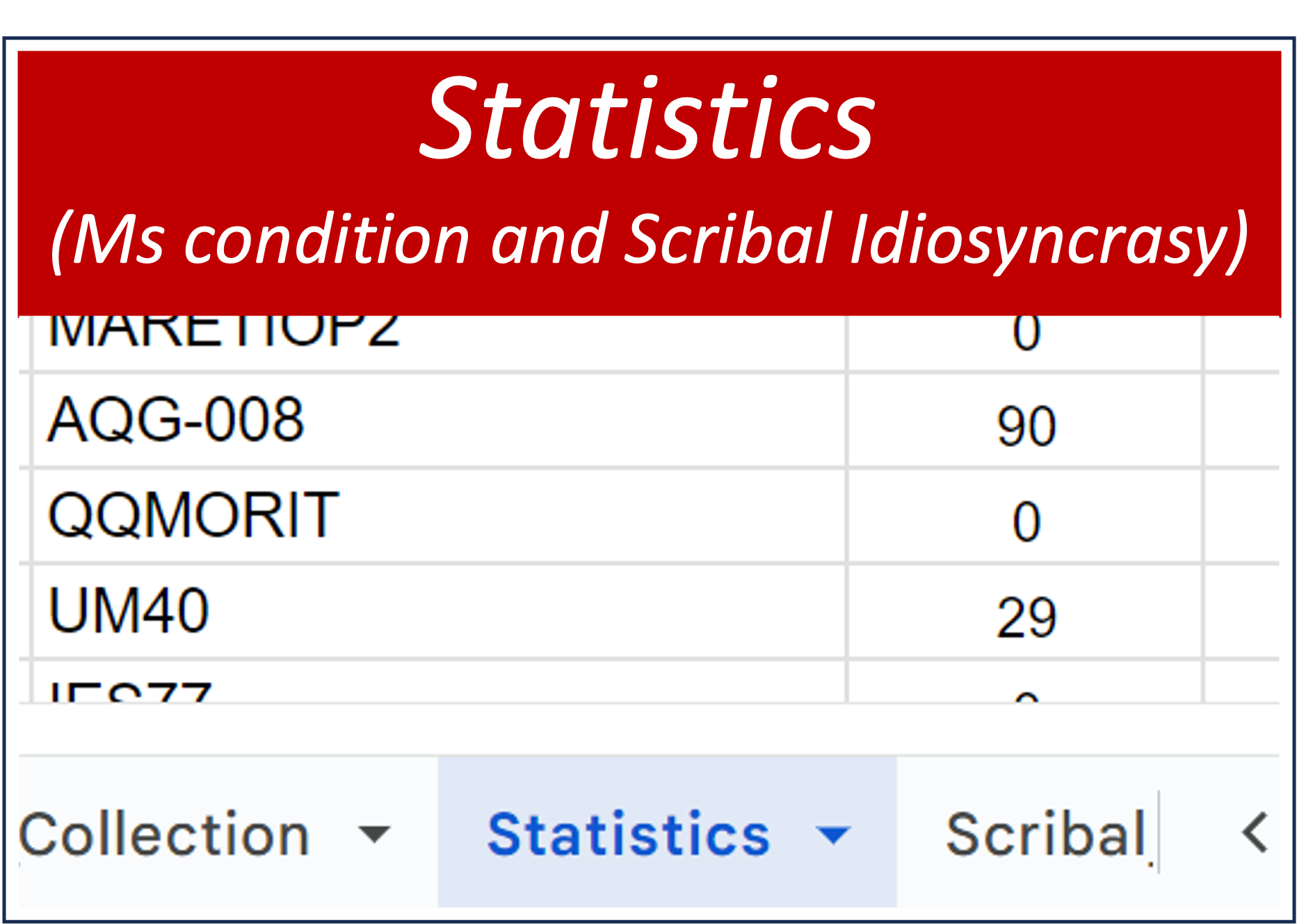
|
This tab contains detailed statistical information related to
two things: 1) manuscript condition (i.e., the presence,
absence, and/or legibility of text in a manuscript); and 2)
scribal idiosyncrasy.
-
Linking data with other tabs: The statistics tab is
organized around the book_id column and the manuscript id
columns. As such these columns are fast and easy links to
columns in other tabs and to the data they contain.
-
Labels, data, and rollovers: The key data related to
manuscript condition is to be found in the total_zeros
column. In the cases of manuscript condition, zeros define
specific locations in the manuscript where text was missing
or undecipherable ( This data is a means of quantifying
the condition of the manuscripts stated in terms of the
number of words missing in the manuscript. The
percent_zeroes column states the same information in
percentage terms. The key data related to scribal
idiosyncrasy is found in the columns related to various
categories of unique readings )total number of unique
readings, percent unique readings, total unique minuses,
total unique plusses, and percent unique plusses. These are
ideal for labels, data content, and rollovers in
visualizations
|
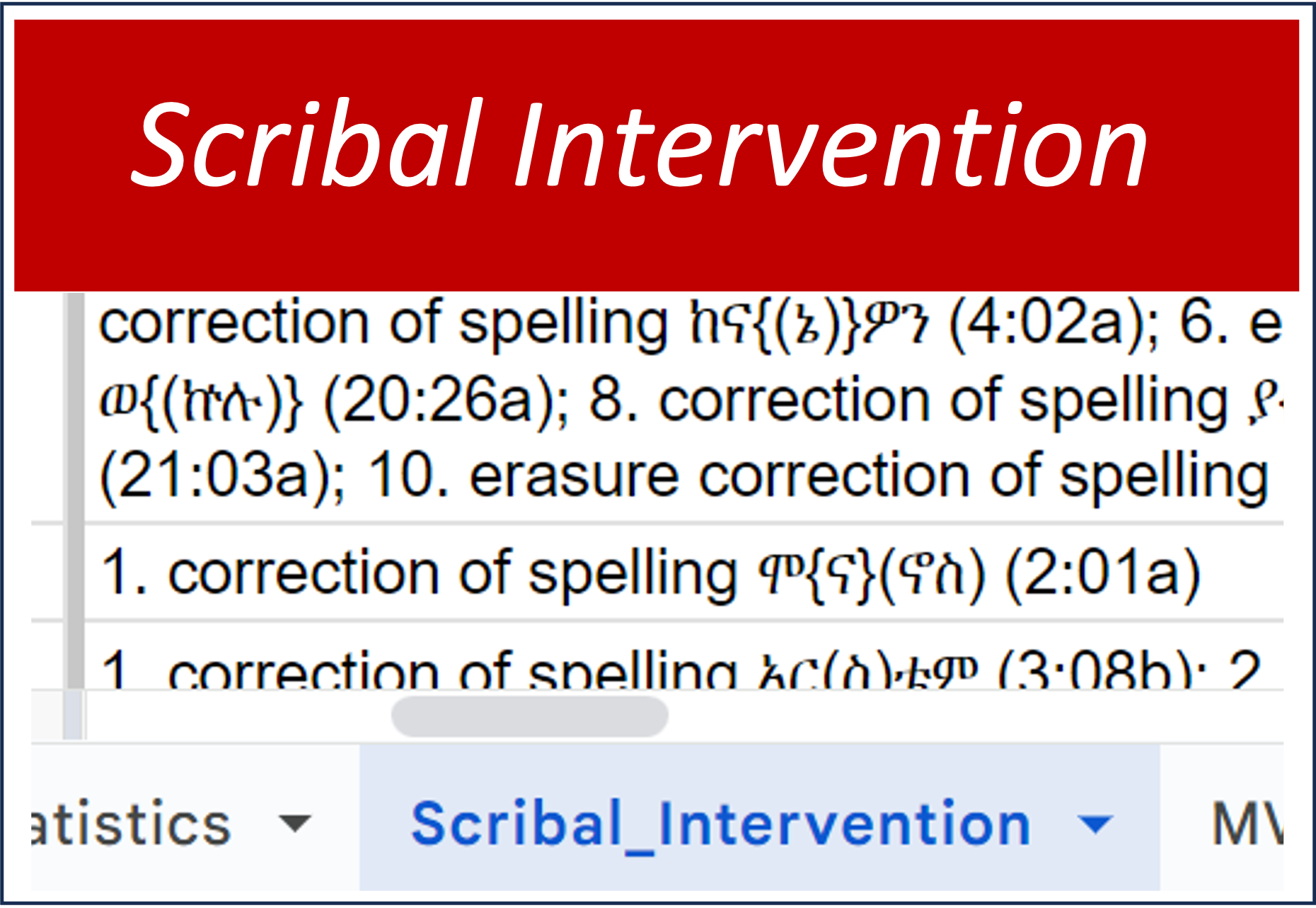
|
This tab contains detailed statistical information related to
the interventions by secondary hands to change and correct
perceived errors. The columns provide information on the
quantity and details of the interventions specific to each
manuscript in the study. This category of data is exploratory
and has been carried out on only one book (Judges), but
provides a proof of concept for the idea of visualizing the
phenomena of scribal intervention.
-
Linking data with other tabs: The statistics tab is
organized around the book_id column and the manuscript id
columns. As such these columns are fast and easy links to
columns in other tabs and to the data they contain.
-
Labels, data, and rollovers: The key statistical data
is specified under three headings indicating they number of
different types of interventions (to change, to add, to
correct). Two additional columns specify the total number of
interventions and number of erasures. Descriptions of the
actual philological data are listed in a final column. This
information is useful for data display and rollover tip
text.
|
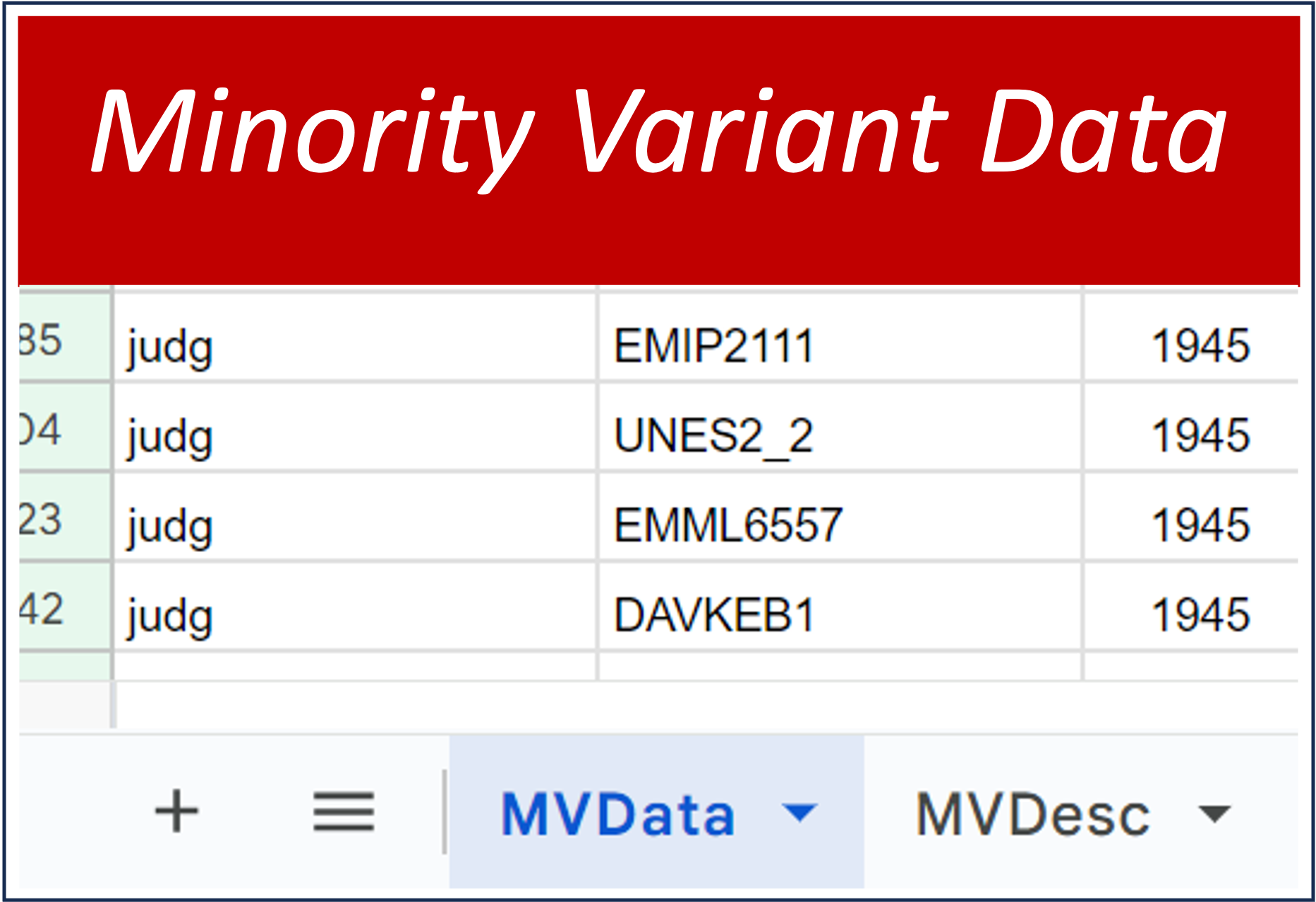
|
This tab, on Minority Variant Data, and the next one, on
Minority Variants Descriptions, contain detailed statistical
and philological information about shared minority variants
among the manuscript copies of a book. This tab is organized
around book id, manuscript id, and the presence or absence
(specified by a one or a null) of minority variants in
specific columns of the dots and bars text matrix.
-
Linking data with other tabs: The minority variant
data tab is organized around the book_id column and the
manuscript id columns. As such these columns are fast and
easy links to columns in other tabs and to the data they
contain. The patterns of shared minority variants can also
be correlated with the tab identifying cluster membership of
each manuscript. In this way we can detect cluster behavior
in relation to the minority variants.
-
Labels, data, and rollovers: The only column with
actual data in it is the one that contains a one if the
minority variant was present at the specific location. But
when aggregated correctly in a visualization, these make it
possible to see much more clearly the patterns of shared
variation that are going on among the manuscripts.
|
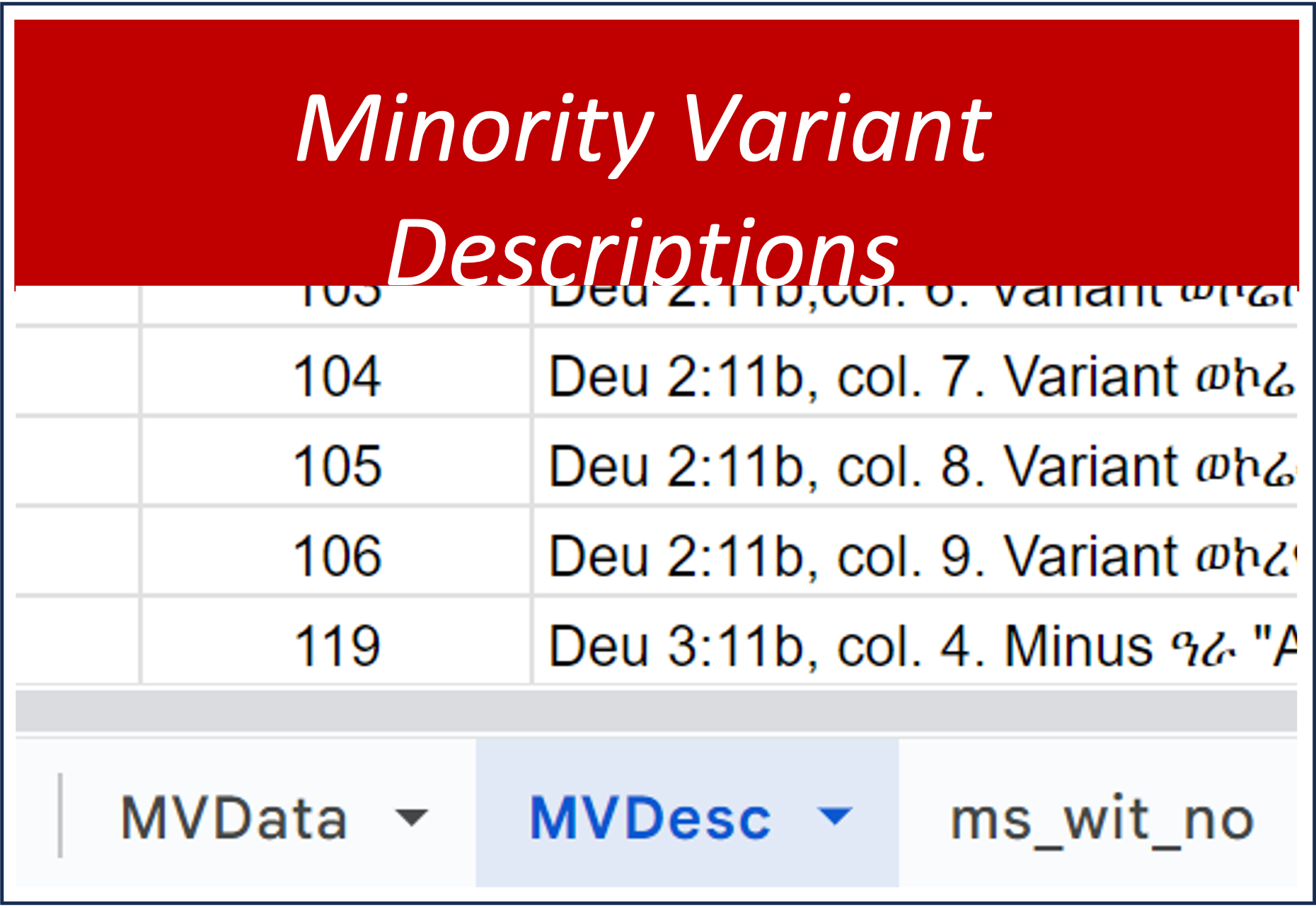
|
This tab, on Minority Variant Descriptions, goes with the
previous one on Minority Variant Data. Whereas the previous
tab contained only statistical information about the presence
or absence of a minority variants, this tab provides only the
listing and description of the minority variants. This tab is
organized around book id, and tvu number. But the column
labeled tvu specifies a locus where multiple manuscfripts
share a particular minority variant. The most important
column, then, is the one labeled minority variant description
(mv_desc) a description of the minority variant itself.
-
Linking data with other tabs: The minority variant
data tab is organized around the book_id column and the
manuscript id columns. As such these columns are fast and
easy links to columns in other tabs and to the data they
contain. The patterns of shared minority variants can also
be correlated with the tab identifying cluster membership of
each manuscript. In this way we can detect cluster behavior
in relation to the minority variants.
-
Labels, data, and rollovers: : The only column with
actual data in it is the one that contains a one if the
minority variant was present at the specific location. But
when aggregated correctly in a visualization, these make it
possible to see much more clearly the patterns of shared
variation that are going on among the manuscripts.
|

|
This tab merely specifies the witness number assigned to each
manuscript in the study. Since there is no consistencey
maintained around which manuscripts are assigned which witness
number, this information has no significance beyond the
specific book it is in. It is, however, useful to be able to
correlate manuscript sigla with witness number for each book
study.
|


